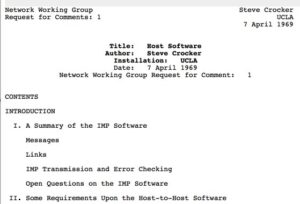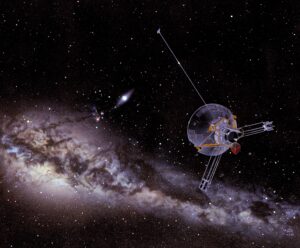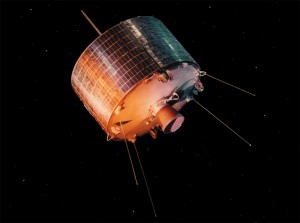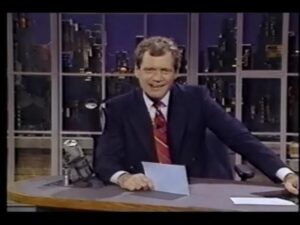Genesis of COBOL
Mary Hawes, a computer scientist for the Burroughs Corporation holds a meeting of computers users, manufacturers, and academics at the University of Pennsylvania for the purpose of creating a common business oriented programming language. At the meeting, representative Grace Hopper suggested that they ask the Department of Defense to fund the effort to create such a language. Also attending was Charles Phillips who was director of the Data System Research Staff at the DoD and was excited by the possibility of a common language streamlining their operations. He agreed to sponsor the creation of such a language. This was the genesis of what would eventually become the COBOL language. To this day COBOL is still the most common programming language used in business, finance, and administrative systems for companies and governments, primarily on mainframe systems with around 200 billion lines of code still in production use.
RFC 1 Defines the Building Block of Internet Communication
Steve Crocker, a graduate student at UCLA and part of the team developing ARPANET, writes the first “Request for Comments“. The ARPANET, a research project of the Department of Defense’s Advanced Research Projects Agency (ARPA), was the foundation of today’s modern Internet. RFC 1 defined the design of the host software for communication between ARPANET nodes. This host software would be run on Interface Message Processors or IMPs, which were the precursor to Internet routers. The “host software” defined in RFC 1 would later be known as the Network Control Protocol or NCP, which itself was the forerunner to the modern TCP/IP protocol the Internet runs on today.
There is a very interesting history to how RFCs came about, itself fittingly documented in RFC 1000. Long story short, the initial design of the ARPANET was not well defined. The students and researchers on the ARPANET team were expecting professionals from the government to come in and define their objectives more clearly. As it started to become evident that there was no specific design forthcoming and possibilities were being discussed informally, the working group decided that they should start writing down and organizing their ideas. However, they were also concerned that by formally documenting their concepts that it might seem like they were taking authority and would possibly offend some hypothetical “official protocol designers” from the government. Therefore Steve Crocker chose to carefully title the document “Request for Comments” so that the point was made that these were not official publications and that in fact, they were asking for others working on the project to add their input. As more RFC documents were written describing and defining the earliest building blocks of the ARPANET, these became the unofficial method of documentation and discussion within the ARPANET Networking Working Group (itself loosely defined in RFC 3). This laid the foundation for the eventual Internet Engineering Task Force (IETF) which today establishes many official Internet Standards. Today RFCs are the official publication of the IETF where Internet developments are proposed and official Internet Standards are defined. As of early 2023 there have been nearly 9500 RFCs published.
IBM System 360 Changes the Industry Forever
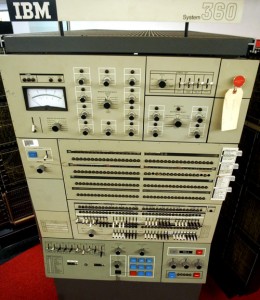
IBM launches the System 360 mainframe architecture, which comprised six compatible models complete with 40 peripherals. The line, dubbed the “360″ because it addressed all types and sizes of customer, cost IBM over five billion dollars to develop, and it is widely considered one of the riskiest business gambles of all time.
Up until this time, computer systems, even from the same manufacturer, were generally incompatible with each other. Software and peripherals from old systems would not work with new systems. This stifled acceptance and deployments of new systems as business customers were hesitant to lose their investments in their current systems. By developing a mutually compatible series of mainframes, customers were assured that their investments would not be lost if they purchased further System 360 models.
IBM’s gamble paid off handsomely as in just the first three months of its release, IBM will receive $1.2 billion in orders. Within five years, over thirty-three thousand units will be sold, popularizing the concept of a computer “upgrade” around the world. The 360 family was the most successful IBM system of all time, generating over $100 billion in revenue through the mid-1980’s. It became the basis for all subsequent IBM mainframe architectures, which would hold a 65% marketshare in the 1990’s.
The 360 architecture also introduced a number of industry standards to the marketplace, such as the worldwide standard of the 8-bit byte. Its enormous popularity catapulted the business world into the technology age and transformed the computer industry. Not bad for a bunch of suits!
Windows 3.1 Released
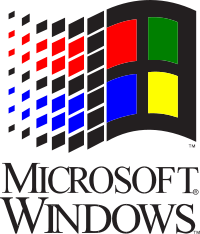
Microsoft releases Windows 3.1, priced at $149.00, selling three million copies over the next two months. Windows 3.1 added multimedia extensions allowing support for sound cards, MIDI, and CD Audio, Super VGA (800 x 600) monitors, and increased the speed of modem it would support to 9600 bps. For many of us that were into computers back in the day, it was the first version of Windows we actually used, as previous versions were still gaining consumer acceptance and Windows 95 wasn’t released until 3 years later.
Pioneer 11 Launched
NASA launches Pioneer 11, the second of two probes along with Pioneer 10 sent out to explore the outer solar system. Pioneer 11 became famous for being the first man-made object to fly by Saturn and also for making the closest flyby of Jupiter. After passing Saturn, Pioneer 11 continued on a trajectory towards the center of the Milky Way and will pass the star Lambda Aquila in 4 million years. The last contact with Pioneer 11 was in November of 1995. Both Pioneer spacecraft carry a plaque with a message from humanity in the chance that it is ever intercepted by intelligent life.
First Commercial Communications Satellite Launched
Intelsat I, the world’s first commercial communication satellite was launched into geosynchronous orbit above Earth. Built by the Hughes Aircraft Company, launched by NASA, and run by the Communications Satellite Corporation (COMSAT), Intelsat I was was nicknamed “Early Bird” and would go on to handle the first nearly instantaneous communications between Europe and North America. When activated in June of that year, Early Bird proved the feasibility of using synchronous satellites for commercial communications and handled telephone traffic, TV signals, telegraph, and faxes.
Could it be … SATAN?

Dan Farmer and Wietse Venema release to the Internet the Security Administrator Tool for Analyzing Networks, known by its acronym, SATAN. SATAN is a network scanner for investigating the vulnerability of remote systems. Designed for use by network administrators, the program will soon generate controversy over the ethics of freely releasing powerful security tools to the general public. And it didn’t please the Church Lady one bit, either.
Stupid Human Tricks in Surround Sound!
Late Night with David Letterman becomes the first network television show to use the Dolby Stereo sound format, which despite its name, was in fact 4-channel surround sound. Guests included Phil Hartman and Donald Trump. This may be one of the Top 10 events in TV Tech History!
Netscape Born
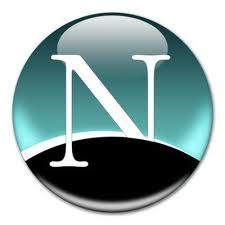
Ironically, 19 years to the day after Microsoft was formed, Marc Andreessen and Jim Clark create the Mosaic Communications Corporation, which will later be renamed Netscape Communications Corporation. Andreessen had developed the Mosaic web browser while working at the National Center for Supercomputing Applications (NCSA) at the University of Illinois.
Microsoft Formed
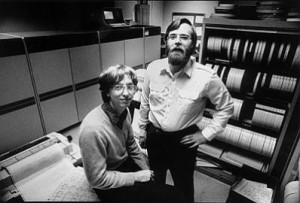
Microsoft is founded as a partnership between Bill Gates, age 19, and Paul Allen, age 22, in Albuquerque, New Mexico. The company was created to develop the BASIC programming environment for the MITS Altair 8800. MITS was headquartered in Albuquerque so Gates and Allen moved there from Boston to launch their company. Eventually they decide to move Microsoft to the Seattle, Washington area, where both men were from originally and met in high school.


